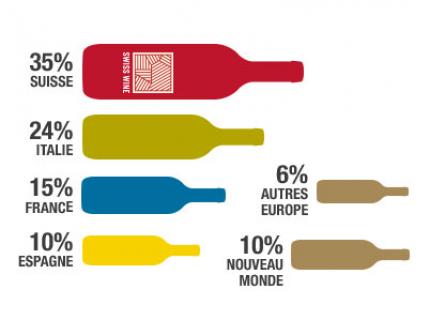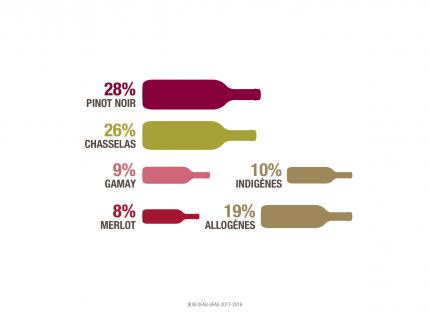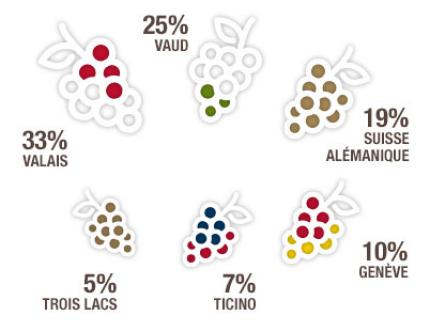Key figures
The challenge for Swiss wines
In Switzerland the consumption of domestic and foreign wines amounted to 264 million liters - or 33 liters per capita - in 2014 (source FSO).
Domestic wine production is limited because of the surface and despite a preference by consumers for local products, the Swiss wines are in strong competition with foreign wines.
This is why the Swiss Wine brand plays its role in defending the national production.

A small but but legitimate wine country
Wine is part of the social, cultural and culinary habits of Swiss consumers who are generally open to the wines of the world.
The country has two eminent international ambassadors: Paolo Basso, World Best Sommelier in 2013 and Dr José Vouillamoz, ampelographer, co-author with Jancis Robinson of the book « Wine Grapes »
About Swiss Wines
- Vine has been grown in Switzerland since the Roman Empire
- 132nd worldwide in terms of its area 41,285 km2
- 20th worldwide in terms of the vineyards surface with 148 km2
- 10th in the world by the ratio between the surface of the country and its vineyards
- 4th in the world by the annual wine consumption per capita (33 litres per capita)

An alpine terroir
A tormented territory where the Alps account for two thirds of the country, followed by the Plateau and the Jura, this is why Switzerland claims an alpine character.
The vineyards are distributed according to the same proportion and are relatively high in altitude - 270 m (Ticino) and 1,100 m (Valais) - often in areas with steep slopes.
In the winter it is not unusual to see snow in the vineyards. The average annual temperatures are between 9 degrees (Swiss German) and 12 degrees (Ticino). Indeed Switzerland is one of the cool climate wine producers.

Defining indigenous grapes
In Switzerland nearly 240 grape varieties are grown, however only 75 appear in the FSO statistics.
The four most cultivated grapes are Pinot Noir, Chasselas (indigenous), Gamay and Merlot, they represent 72% of the harvest.
The indigenous grape varieties that enrich and contribute to the identity of the Swiss vineyards represent 36% of the crops. Those include the Chasselas with 27% associated with Gamaret, Garanoir, Arvine, Amigne and many others that account for 9% of crops.
Traditional or universal varieties such as Chardonnay, Sauvignon and Syrah allow Swiss producers to demonstrate the quality of the soil and their know-how in international comparisons.

Six regions, six identities
Each region and sub-region has a an identity defined by its landscape, its geology and its specific climate. The organization of the wine branch has defined representation that revolves around six regions.
The Valais is at the heart of the Alps, Vaud is essentially on the shores of Lake Geneva, the Swiss-German region is made of many scattered areas, Geneva is where the Jura and the Alps meet, Ticino is on the south side of the Alps facing Italy and the three lakes are mostly on the slopes of the Jura.




